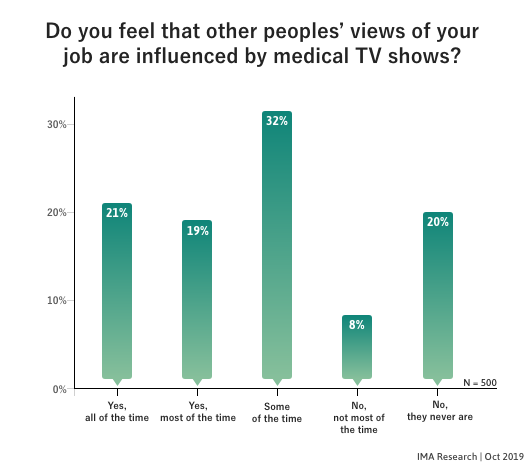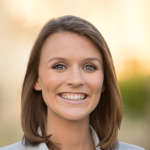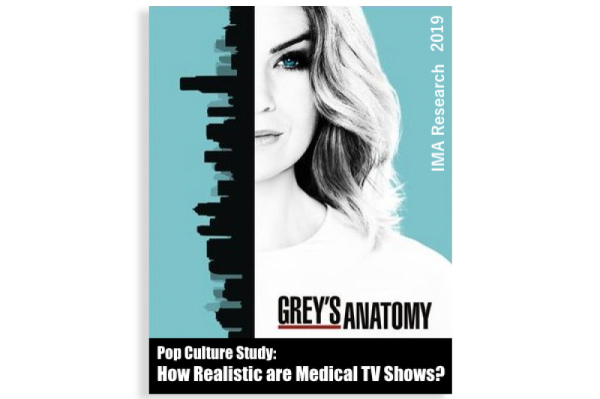While most medical professionals agree that their job is not accurately portrayed on medical TV shows overall, we were surprised to find out just how many doctors and nurses feel that certain aspects are actually pretty accurate.
For instance, we would assume that Meredith Grey dating five different doctors (RIP, Derek) throughout the Grey’s Anatomy series would be totally preposterous in real life. It turns out we were wrong. Those crazy dramatic romantic plot lines that medical TV shows have might be pretty accurate in actual hospitals.
IMA Research surveyed 500 doctors and nurses to find out just how realistic medical TV shows are. We found that one-in-seven doctors and nurses feel the romantic relationships between coworkers that are portrayed are actually realistic, and we’re here for the drama.
Below are some of our other interesting findings.
- Out of several popular medical TV shows, doctors and nurses believe that The Resident is the most realistic.
- More than half of doctors and nurses believe that their occupations are not accurately portrayed on TV.
- Nearly one-in-three doctors and nurses find that medical TV shows accurately portray the stress levels of their occupation.
IMA Research asked doctors and nurses about how their profession was portrayed on TV, and also if certain medical TV shows were more accurate than others. Participants were asked to rate how realistic each show is from one to five, with a score of “one” being the least realistic and a “five” being the most realistic. Below is a list that ranks the shows from most to least realistic, based on how many people gave each show a “five.”
- The Resident
- Nurse Jackie
- Scrubs
- House
- Grey’s Anatomy
- ER
*The most realistic show on the above list received the most scores of five and the least realistic show received the least fives.
It looks like TV is actually realistic… some of the time
We found that more than half (57 percent) of doctors and nurses feel that their jobs are not accurately portrayed on medical TV shows overall. While medical professionals might not feel like their jobs are portrayed realistically as a whole, their opinions vary when we break down various aspects of the job. Around one-in-three respondents believe that the stress levels of their job are accurately depicted on medical TV shows. That makes sense considering we’re always on the edge of our seat when some surgeon prepares to perform brain surgery twenty seconds after a dramatic breakup with a coworker. If that isn’t stressful, we don’t know what is.

One-in-four respondents feel that their work hours are portrayed accurately on TV, which we’re not really surprised about since they never seem to leave the hospital on TV or in real life. Around 21 percent of doctors and nurses believe their job duties are realistically shown on TV, and 16 percent of participants say that their friendships with coworkers are accurately depicted.
The aspect that takes the cake for least realistic is life outside of work. Only 10 percent of the nurses and doctors in our survey felt that their lifestyle outside of work hours was accurately portrayed on TV.
Do doctors and nurses feel differently about realistic medical TV shows?
It turns out doctors and nurses may have different opinions on just how realistic different medical TV shows are. The show that received the most scores of five among the nurses in our study was Nurse Jackie. Makes sense, seeing as the titular character for the show is a nurse. We’d hope they’d get the job fairly accurate. The Resident came in a close second for the most fives for nurses.
On the other hand, The Resident is the show that received the most scores of five from doctors. The show that came in second for number of fives was Scrubs. This was an interesting find, seeing as Scrubs was also the show that received the most scores of “one” from doctors and nurses overall.
It turns out doctors might be the ones who get caught up in those complicated love triangles that we love on medical TV shows so much. While only 10 percent of nurses feel that romantic relationships between coworkers are accurately portrayed on TV, 17 percent of doctors feel the same. Plus, twice as many doctors feel that their lifestyles outside of work are portrayed realistically on TV when compared to nurses.
Scrubs
Scrubs, a popular NBC medical dramedy, aired for nine seasons. While it might have been a fan favorite with audiences, it turns out the show might not be very realistic. Out of all the popular medical shows we asked participants about, Scrubs was the show that received the most scores of one. Around 37 percent of doctors and nurses gave the show a rating of one.
The Resident
The Resident received the most ratings of five out of all the popular medical in our study. Nineteen percent of all nurses and doctors in our study gave it a five. This medical drama is fairly new, premiering in 2018. It is currently on its third season.
Do TV shows influence how people view real doctors and nurses?

Twenty percent of respondents believe that other peoples’ views of their occupation are always influenced by medical TV shows. Another 19 percent believe that other peoples’ views are influenced by TV most of the time.
On the other hand, 20 percent of participants feel that others’ views of their occupation are never influenced by TV, while eight percent say they aren’t usually influenced by TV.


